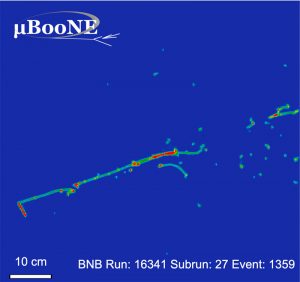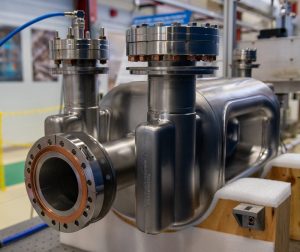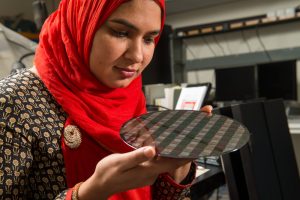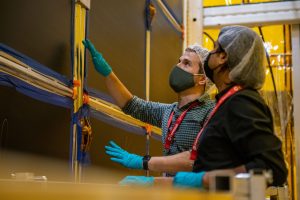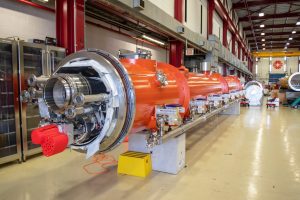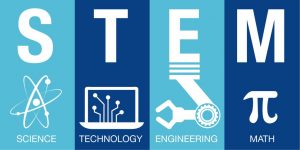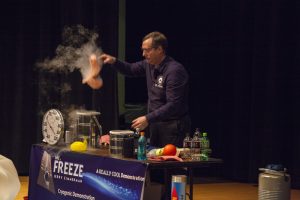More than 50 nations partner with the Fermi National Accelerator Laboratory of the US Department of Energy to create cutting-edge technologies and answer the riddles of matter, energy, space, and time.
In 2021, they progressed science and technology in ten different ways. Fermilab and its collaborators
1. Discovered compelling evidence for physics outside of the Standard Model.
The long-awaited initial data from Fermilab’s Muon g-2 experiment show basic particles known as muons behaving in ways that the Standard Model of particle physics does not anticipate.
The ground-breaking finding, which was achieved with extraordinary accuracy, validates a discrepancy that has vexed scientists for decades. It suggests that muons may interact with particles or forces that have yet to be found.
2. DUNE detector component excavation and construction began.
The Deep Underground Neutrino Experiment is a world-class experiment that aims to solve the mystery of neutrinos. Construction teams began lowering equipment a mile down and excavating room for the Long-Baseline Neutrino Facility’s South Dakota component in May. Scientists and engineers in the United Kingdom have begun manufacturing and testing components for the facility’s first big neutrino detector module. The near detector’s design was also released by the DUNE cooperation. A near detector prototype was sent from the University of Bern to Fermilab for testing with the neutrino beam.
3. PIP-II particle accelerator technology has been successfully tested.
The PIP-II project team, along with its national and international partners, is preparing to build Fermilab’s next, widely awaited particle accelerator. The PIP-II Injector Test Facility completed its testing earlier this year. The favorable decision clears the way for the 700-foot-long PIP-II accelerator to be built at Fermilab, which will power record-breaking neutrino beams and drive a wide physics research program. The PIP-II Cryogenic Plant Building began construction in August 2020, and the facility is now fully complete. The structure will contain the new machine’s cryogenic equipment as well as utilities. Efforts to apply machine learning for PIP-II and other systems
4. Authored almost 600 scientific papers (and counting)
Fermilab scientists co-authored almost 600 scientific publications in 2021, furthering our understanding of energy, matter, space, and time, as well as the technology that enable these breakthroughs. The search for stealthy supersymmetry with the CMS experiment at the Large Hadron Collider; dozens of papers on the Dark Energy Survey, including the most precise measurements of the universe’s composition and growth to date; the discovery of performance-limiting nanohydrides in superconducting materials; and the discovery of performance-limiting nanohydrides in superconducting materials are among the top achievements.
5. Contributed to the advancement of the LHC and its CMS detector.
The US Department of Energy has authorized the complete US contribution to the Large Hadron Collider’s high-luminosity upgrade, or HL-LHC, at the European laboratory CERN in December 2020. Collaborators will donate 16 magnets, led by Fermilab, to focus the LHC’s near-light-speed particle beams into a compact space before colliding. They’ll also send eight superconducting cavities, which are radio-frequency equipment for manipulating the intense beams. (They’ll also throw in four more magnets and two extra cavities.) In comparison to the existing LHC, the additional equipment will allow a 10-fold increase in the number of particle collisions at the future HL-LHC. The accelerator improvement, together with modifications to the CMS detector, will allow scientists to examine particles like the Higgs boson in more depth. Furthermore, an increase in the number of collisions might lead to the discovery of novel physics or unusual physics occurrences.
6. Quantum research at the highest level
Particle physics and quantum information science are inextricably linked. Fermilab scientists and engineers used their knowledge to enhance quantum research in collaboration with industrial partners and cooperating universities. Take the initial steps toward establishing a quantum computer, create quantum sensors for dark matter research, develop quantum algorithms, implement artificial intelligence on a microchip, and construct and test the components of a quantum internet, to name a few examples. They’re all part of Fermilab’s numerous elements of quantum research. This involves the development of the MAGIS-100 experiment, which will investigate dark matter, gravity, and quantum physics using free-falling atoms.
7. Work on new neutrino and muon experiments has progressed.
Aside from the building projects described above, Fermilab and its colleagues worked on the ICARUS detector and the Short-Baseline Near Detector, both of which are part of the Short-Baseline Neutrino Program, which studies neutrino oscillations and searches for novel physics. SBND scientists are working on the building of their liquid-argon detector, while ICARUS scientists detected the first particles in their neutrino detector early this year. Scientists are also developing magnets and detectors for the Mu2e experiment, which will seek for direct muon-to-electron conversion. If discovered, it would indicate the presence of new particles or natural forces.
8. Built and delivered the final superconducting particle accelerator component for the world’s most powerful laser
In collaboration with partners at other DOE national labs, Fermilab researchers designed, built and delivered superconducting accelerator cryomodules for upgrading the world’s most powerful X-ray laser, the Linac Coherent Light Source at SLAC National Accelerator Laboratory. With these LCLS-II upgrades, biologists, chemists and physicists will be able to probe the evolution of systems on a molecular level, forming flipbooks of molecular processes using one million X-ray pulses every second. Another upgrade to provide higher-energy particle beams, called LCLS-II-HE, is underway to enable even more precise atomic X-ray mapping. Tests of a verification cryomodule built at Fermilab achieved records far beyond current cryomodule specifications and should result in a 30% improvement compared to LCLS-II.
9. Created new fellowships to attract students, scientists, and engineers from underrepresented groups.
Fermilab is dedicated to attracting, developing, and keeping a diverse workforce, as well as nurturing an inclusive workplace that fosters scientific, technical, and operational excellence. The Carolyn B. Parker Fellowship, named after the first African-American woman to acquire a postgraduate degree in physics, offers Black and African-American postdoctoral academics the chance to work in Fermilab’s Superconducting Quantum Materials and Systems Center for up to five years. A five-year post in Fermilab’s Theory Division is available through the new Sylvester James Gates, Jr. Fellowship. It places a premium on the participation of first-generation college graduates as well as the representation of historically and currently underrepresented minoritized persons in theoretical physics. The new Accelerator Science Program to Increase Representation in Engineering, or ASPIRE, fellowship gives students hands-on learning opportunities at Fermilab’s world-class particle accelerator programs. Undergraduate and graduate engineering students from underrepresented groups are eligible for the grant. Visit our website to read about more Fermilab programs aimed at increasing diversity and inclusion in science, technology, engineering, and mathematics.
10. Developed and implemented educational and outreach initiatives
In 2021, Fermilab sponsored a variety of online STEM teaching and outreach activities. Virtual Family Open House, Ask a Scientist, STEM job fair, Saturday Morning Physics, and the Arts and Lecture at Home series, which included virtual art displays, were among the live programs. They drew spectators from all walks of life and backgrounds from all around the world. On the Fermilab YouTube channel, tens of thousands have viewed lectures, physics slams, and other programming. This channel, which is known for the popular scientific explainer films featuring Fermilab physicist Don Lincoln, now has almost 600,000 subscribers. The channel also debuted the new Even Bananas series, which features Kirsty Duffy and other scientists explaining the wonders of the neutrino.






